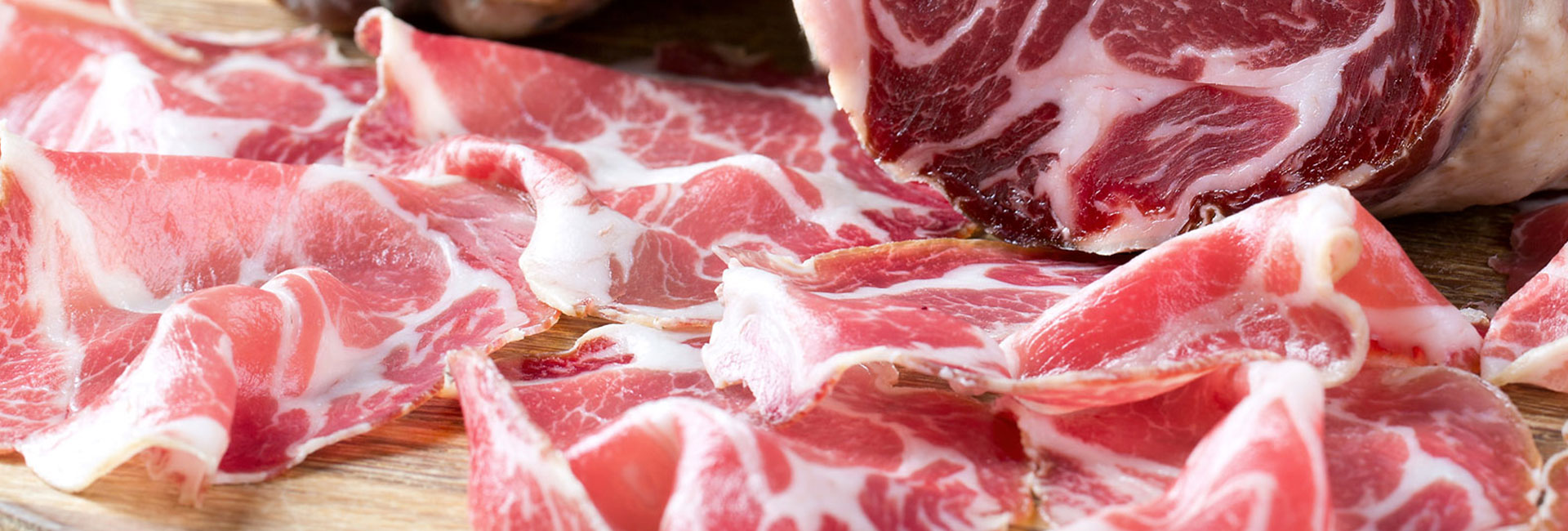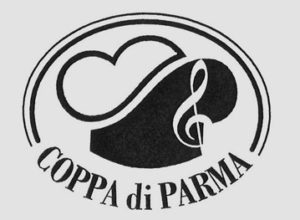Coppa of Parma P.G.I.
Coppa di Parma is made from the precisely trimmed muscular portion of the pig’s neck.
According to accurate research by enthusiasts of historic-gastronomic origins of typical products, there are definite references indicating its production since the remote 1680.
Coppa di Parma is produced in the area defined by the inner administrative territories of the provinces of Parma, Modena, Reggio Emilia, Mantova, Pavia and the communes along the strip of river Po facing part of the administrative areas of the provinces of Lodi, Milano and Cremona.
Production
Coppa di Parma, is made mostly from the muscles of the superior cervical region: unprocessed meat weighs about 2,7-3 kg.
Salt is added using the method of dry salting, and then meat is put away in a salting storage on appropriate carts within shelves: this is the best salting technique that gives the product the long maturing and the best organoleptic qualities.
Upon salting, the product is put in natural cattle intestine and then hand tied with a canvass string natural intestine of cattle and then tied by hand with canapé string. After an accurate tasting, the product is put to maturation for a long time (at least for 60 days) and through dehydration the meats receives scent, aroma, fragrance and an exquisite and delicate taste, while the strings of the binding little by little loosen.







